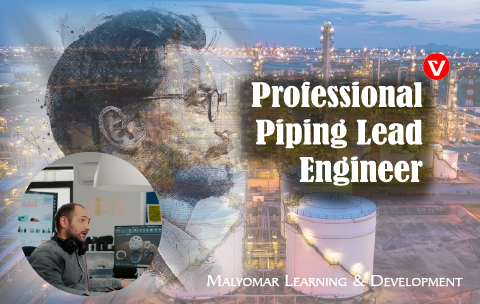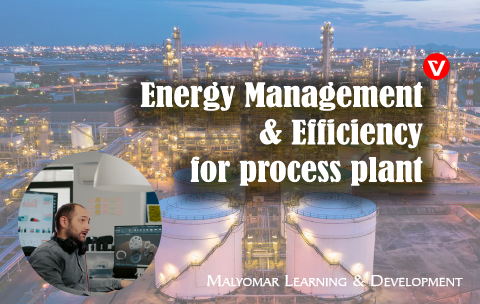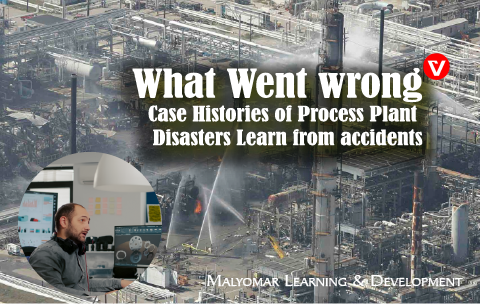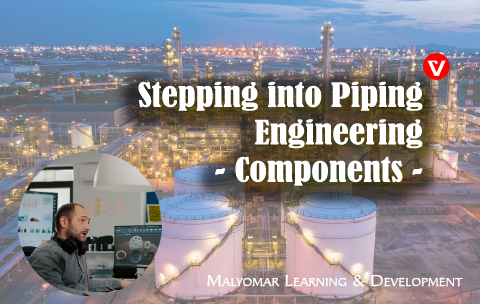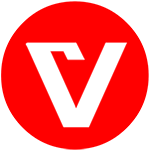Pipe Stress Engineering, Static
What you'll learn
Execute the accurate geometric and topological discretization of the pressure envelope and ancillary components within the CAESAR II
Define and integrate the set of time-invariant static load vectors
Conduct a rigorous tensor evaluation of primary and secondary stresses
Nozzle and Support Reaction Profiling
Resolve the effects of non-linear boundary conditions
Validate the mechanical integrity compliance margin
Drafting hardware technical specification
Moving among Compliance, Value and Energy
Master the final phase of analysis, producing irrefutable, audit-proof documentation.
As-built Engineering in Assets Management
What you'll learn
Understand the critical importance of as-built data in revamp projects.
Plan and execute a site survey for collecting as-built data.
Utilize new technologies and tools like laser scanning, drones, and reality capture.
Translate raw field data into accurate engineering drawings and models.
Present as-built information for new construction.
Update existing plant drawings and documents to reflect as-built conditions.
Process Plant Layout and Piping Design, Level – I
What you'll learn
Interpret Engineering Documents: Effectively read and utilize core piping design documents, including PFDs, P&IDs, and Isometric drawings.
Identify Components: Differentiate and select standard piping components (valves, fittings, flanges) and understand their functions within the system.
Apply Layout Principles: Execute preliminary Plot Plan and Equipment Layout based on functional and safety criteria.
Establish Design Constraints: Identify and apply the primary constraints that dictate pipe routing (e.g., access, maintenance, thermal expansion).
Determine Clearances: Apply industry standards to determine minimum clearances, spacing, and accessibility requirements for various equipment types.
Communicate Design Intent: Structure and present design information clearly for effective communication with structural, mechanical, and stress engineering teams.
Process Plant Layout and Piping Design, Level-II
What you'll learn
Design Major Plant Areas: Develop comprehensive layouts for common plant areas (e.g., pump stations, compression stations, cooling towers) adhering to API and OSHA standards.
Optimize Pipe Rack Geometry: Calculate and optimize pipe rack width, height, and bay spacing while managing utility segregation and thermal expansion requirements.
Resolve Layout Conflicts: Proactively identify and resolve complex clashes and interferences using 3D model review techniques (e.g., navigating virtual HAZOP and 3D Model Review sessions).
Apply Design for Maintenance (DFM): Ensure adequate maintenance envelopes and removal paths for critical equipment (e.g., heat exchangers, valves, pump spares) to minimize future downtime.
Specify Specialty Items: Prepare accurate data sheets for critical piping specialty items (e.g., strainers, spectacle blinds, flame arrestors) and integrate them correctly into the layout.
Generate Core Deliverables: Produce precise Plot Plans, Equipment Arrangements, and Piping Key Plans suitable for structural and civil engineering use.
Professional Piping Lead Engineer
What you'll learn
Overview on project management
Setting and achieve success criteria
Piping Lead engineer management approaches
Path forward of Lead Engineer
Wind Energy, from academic and Industrial perspectives
What you'll learn
Shed a light on renewable energy.
Increase trainee awareness for wind energy.
Provide Engineering background on wind turbine design from mechanical and civil perspectives.
Energy Management and Efficiency for process plant
What you'll learn
provide a concise overview of energy management principles and techniques for the process industries.
Be aware of international standards relevant to Energy Management.
Train team on program management.
Expert
What Went Wrong: Case Histories of Process Plant Disasters Learn from accidents. Plant Layout issues
$600.00
What Went Wrong: Case Histories of Process Plant Disasters Learn from accidents. Plant Layout issues
What you'll learn
Awareness of how safety has no tolerance.
Provide a way to handle different design issues.
Show the importance of organizing Lessons Learned smart database.
Stepping into Piping Engineering – Components
What you'll learn
What is Piping Engineering.
Piping Engineers Roles and Responsibilities.
Detailed study of Piping Network Components.
Root Cause Analysis, the right tool
What you'll learn
Provide a guide to empirically investigating quality failures using the scientific method in the form of cycles of Plan-Do-Check-Act (PDCA) supported by the use of quality tools.
Intermediate
ASME B31.3 and B31.1 Practical Piping Design for Process and Power Applications
$600.00
ASME B31.3 and B31.1 Practical Piping Design for Process and Power Applications
What you'll learn
By participating in this course, you will learn how to successfully:
Identify the responsibilities of personnel involved in the design, fabrication, assembly, erection, examination, inspection, and testing of process and/or power piping
Describe the scope and technical requirements of the ASME B31.3 Code as well as differences in ASME B31.1.
Apply and implement the quality requirements that are defined in the ASME B31.3 and B31.1 Code.
Explain the principal failure modes of piping components and where to look for them
Describe the layout and simplified and formal analysis techniques
Who should attend?
This course is designed for engineers, managers and quality personnel who are involved in the design, manufacturing, fabrication, and examination of process piping that is being built to the requirements of U.S. Codes & Standards.
Engineers entering the piping design and analysis field
Practicing piping engineers requiring background on Code compliance and trends in piping design, analysis, and fabrication
QA/QC personnel
Piping Designers involved in the design, layout, of pressure piping systems.
Process Plant Layout and Piping Design, Level-III
What you'll learn
Implement Design Strategy: Develop and enforce a comprehensive Basis of Design (BOD) for layout, driving standardization and compliance across the project.
Manage Brownfield Constraints: Master the advanced planning and execution required for integrating new piping systems into existing plant infrastructure (Brownfield projects), minimizing shutdown time and maximizing safety.
Optimize Project Cost (Value Engineering): Apply Value Engineering (VE) principles to layout decisions to achieve quantifiable reductions in CAPEX (material costs) and OPEX (maintenance and energy costs).
Lead Safety and Review Workshops: Effectively participate in and lead HAZOP, SIL, and advanced 3D Model Review sessions, driving corrective actions that resolve critical risks.
Validate Stress Analysis Feedback: Critically review the Stress Analysis Report to ensure the final layout satisfies mechanical integrity requirements and manage design iteration cycles efficiently.
Develop Modularization Plans: Evaluate the technical feasibility and cost benefits of modularization and offsite fabrication for large sections of the plant.





